16 Best Free Workout Apps in 2025
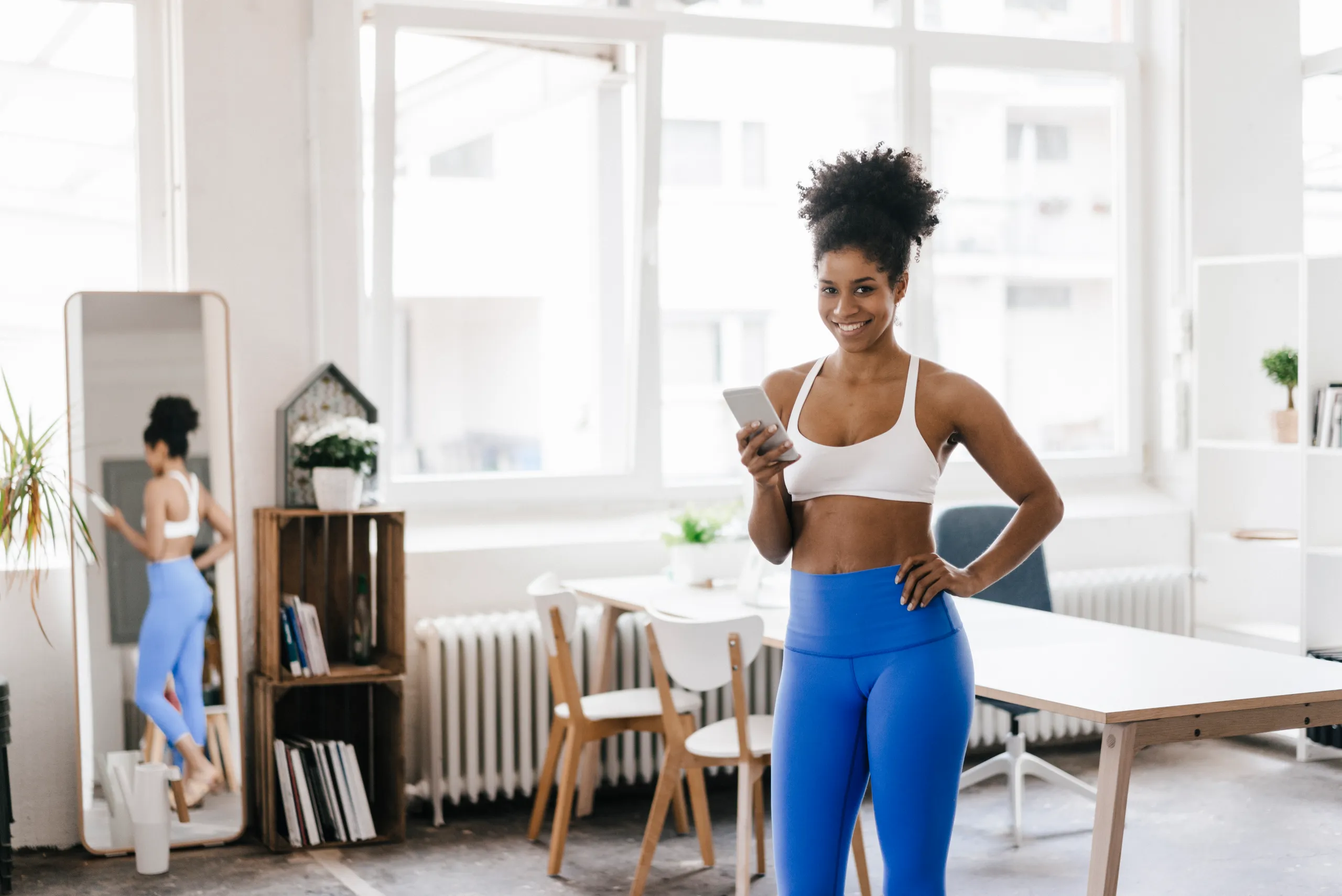
Find the best free workout apps in 2025 to stay fit anytime, anywhere. Compare top-rated options for every fitness goal, no fees required.
Finding the right free workout app is one of the most practical parts of choosing the Best Fitness Apps, because the right choice saves time and keeps you moving. You may want short HIIT sessions at home, yoga to loosen tight hips, or a strength training plan that adapts as you improve, but how do you separate useful features from hype?
This guide helps you navigate the top free fitness apps, comparing key features such as guided workouts, workout plans, home workouts, progress tracking, nutrition, and goal setting, so you feel fully informed and equipped to choose the perfect app for your goals.
GetFit AI's solution, an AI fitness app, helps by matching your goals, schedule, and available equipment to the best free workout apps and tailored routines so you can start with confidence. It keeps recommendations simple, highlights guided sessions and beginner workouts, and tracks progress, making it easy to choose the right app for you.
Summary
- Free workout apps operate as a toolbox of role players rather than one-size-fits-all solutions, with the article profiling 16 distinct apps and noting the market already exceeds 50 million downloads, which explains why picking the right combination matters more than hunting for a single perfect app.
- Fragmenting training across multiple free apps creates hidden costs in terms of time and coaching fidelity. Meanwhile, tracking matters for most users (75% say tracking features are essential), so juggling separate plans, trackers, and social tools often dilutes measurable progress.
- Personalization is a primary retention lever, as over 60% of users prefer apps with customizable workout plans. This means that cookie-cutter templates frequently fail when life, equipment, or missed sessions require sensible substitutions.
- Well-structured free programs can deliver real gains quickly, with a 2024 study showing that 75% of participants reported improved physical fitness after three months of using free workout apps. This underscores that progression rules and feedback matter more than flashy features.
- Small UX frictions can kill momentum, and user sentiment suggests that a good fit drives satisfaction, with an 80% user satisfaction rate among those who find the right app. This indicates that interruption-free sessions and micro-features, such as one-tap start and persistent timers, are critical for long-term adherence.
- A practical two-week test is an effective filter, trackable over 14 days by session completion and whether the app adapts to missed workouts. Motivation signals also validate early promise, as about 70% of users report increased motivation when using workout apps.
- GetFit AI's AI fitness app addresses this by matching your goals, schedule, and available equipment to the most suitable free workout apps and maintaining a single, exportable training timeline.
16 Best Free Workout Apps in 2025
These 16 apps form a toolbox, not a single prescription: each one excels at a particular task, such as social motivation, guided programs, run tracking, strength logging, or short, equipment-free workouts, and the savvy user assembles the right combination to match a clear goal. I’ll map what matters beyond features, explain why people stall, and demonstrate how athlete-driven personalization alters the trade-offs you face when choosing a free app.
1. GetFit AI

GetFit AI is an advanced, AI-powered fitness app that offers personalized workouts inspired by the exact training routines of legendary athletes, including Arnold Schwarzenegger, Kobe Bryant, Cristiano Ronaldo, and Serena Williams. The app uniquely combines celebrity training programs with AI customization, providing tailored workouts that adjust in real time based on your progress, injuries, and readiness. Users can also engage in conversational coaching with AI versions of these athletes for motivation, form corrections, and advice. This interactive coaching ensures workouts remain safe, effective, and aligned with individual goals, making elite-level training accessible for all fitness levels.
Features
- Personalized AI-driven workout plans based on athlete templates
- Conversational AI coaching for guidance, motivation, and form tips
- Workouts inspired by the routines of famous athletes and adapted for personal needs
- Real-time adaptation to progress, injury history, and recovery status
- Tracking of performance metrics such as strength curves, body composition, and rep max estimates
Pros
- Combines elite athlete training with cutting-edge AI personalization
- An interactive and motivational coaching experience feels authentic and specific
- Ensures safety with built-in recovery and intensity management
- Suitable for beginners through advanced users seeking structured, expert-level training
- More affordable than traditional gym memberships or personal trainers
Best For
- Fitness enthusiasts wanting to train like professional athletes
- Users seeking personalized, adaptive workout programs with expert guidance
- Those who benefit from motivational AI interaction and detailed progress tracking
- Beginners looking for a safe entry into intensive workout routines with expert adaptation
- Athletes aiming to push their limits with data-driven, high-quality training plans
2. Strava

Strava combines ride tracking with a social community, making it popular among cyclists. It tracks speed, distance, elevation, and ride time, while allowing users to compare performance on segments and leaderboards. Community features, such as challenges and group ride planning, boost engagement. The free plan is feature-rich, supporting both competitive and social cyclists.
Features
- Detailed ride statistics, including elevation
- Segment and leaderboard comparisons
- Community challenges and kudos
- Group ride planning tools
- Syncs with fitness devices
3. Nike Training Club
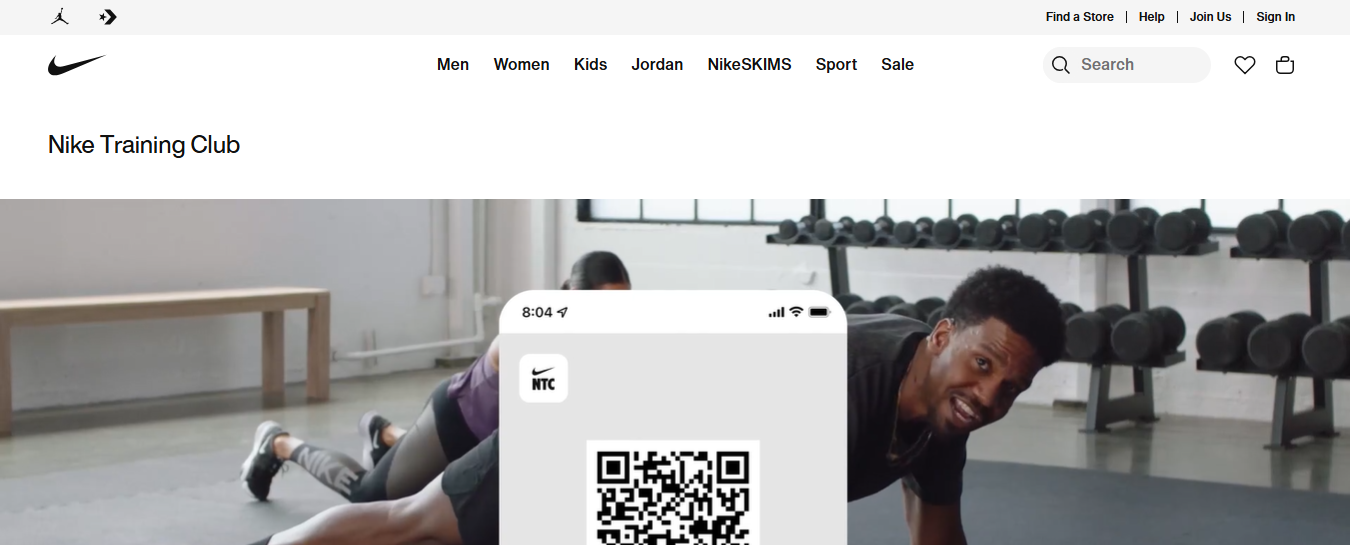
Nike Training Club is widely regarded as the top free workout app for overall fitness, offering a superb mix of workout types and high-quality production. The app supports your goals, whether you want to build strength, improve cardiovascular fitness, or increase flexibility. All workouts are led by certified trainers, accompanied by clear video guidance and coaching tips. Multi-week programs, organized around goals such as muscle building or fat loss, help users stay on track without incurring any additional fees.
Features
- Certified trainer-led classes
- Variety of workout styles (strength, cardio, yoga, mobility)
- Structured multi-week programs
- No subscription required for full access
- High-quality professional videos
4. Jefit
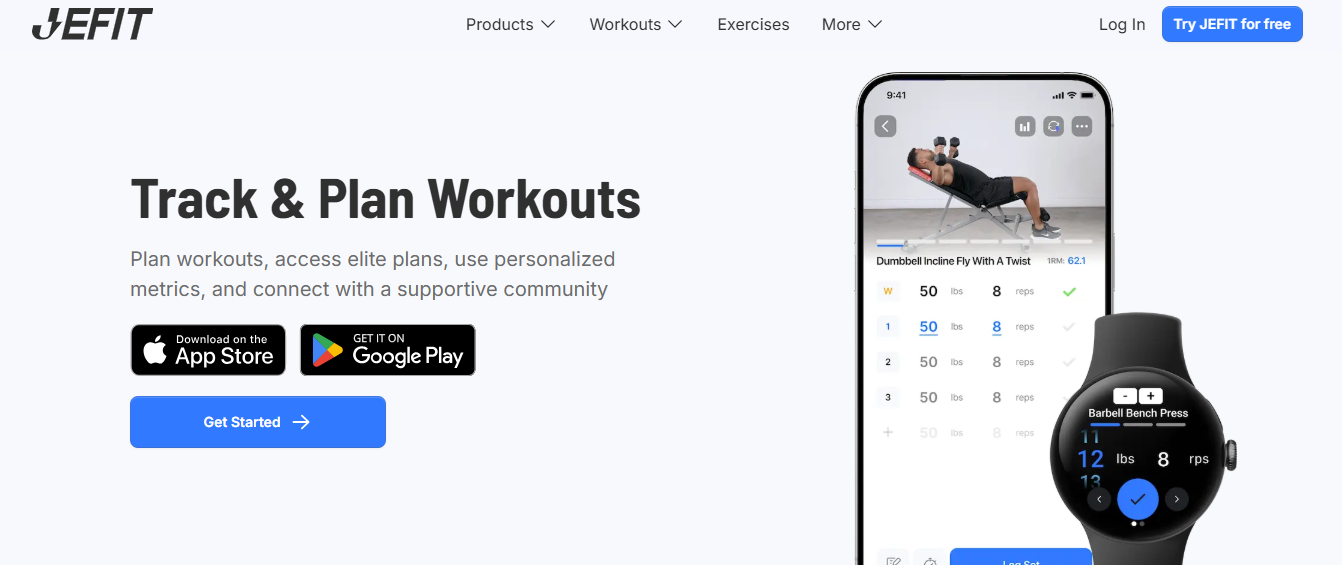
Jefit is ideal for gym lifters who want detailed workout tracking and extensive exercise libraries. It allows logging of sets, reps, weights, and rest times, plus visual progress charts. Users can design their own routines or follow community-created programs. Although the free app includes ads and an older interface, its comprehensive data tracking is valuable for dedicated weightlifters.
Features
- Thousands of exercises with demos
- Customizable workout builder
- Workout logging and progress tracking
- Community workout routines
- Visual progress charts
5. MapMyRun by Outside
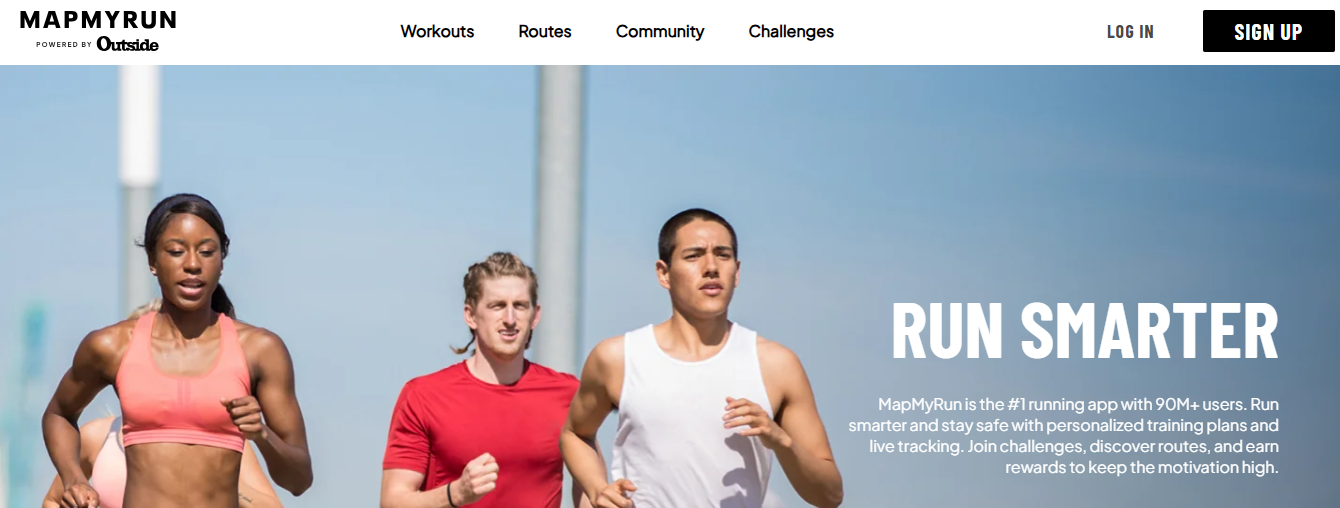
MapMyRun excels at running tracking, offering GPS mapping, pace, and distance analytics. It integrates with wearable devices and heart rate monitors for more detailed feedback. Audio coaching helps maintain motivation during runs, and users can discover or save popular routes locally. Ideal for beginners or avid runners expanding mileage or training for races.
Features
- Real-time GPS route tracking
- Pace and distance analysis
- Audio coaching cues
- Compatibility with fitness wearables
- Route discovery and saving
6. Fitbod (Free Version)
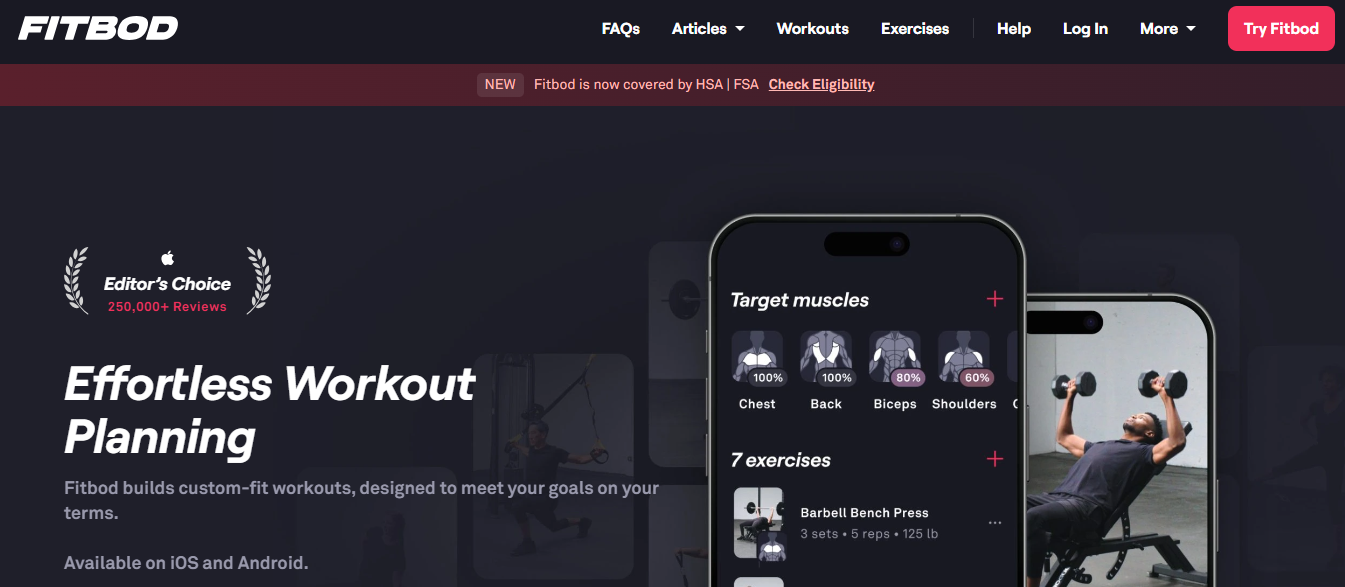
Fitbod's free tier caters to strength training enthusiasts by delivering personalized, algorithm-driven workouts three times per week. It adapts based on your available gym equipment and previous exercise sessions, helping you optimize recovery and progression. While the free plan limits the number of workouts, it provides enough structure for those focused on gaining muscle or strength without incurring any costs.
Features
- Innovative, adaptive workout programming
- Customization by available equipment
- Muscle group-specific routines
- Gym and bodyweight options
- Three personalized workouts per week in the free tier
7. FitOn
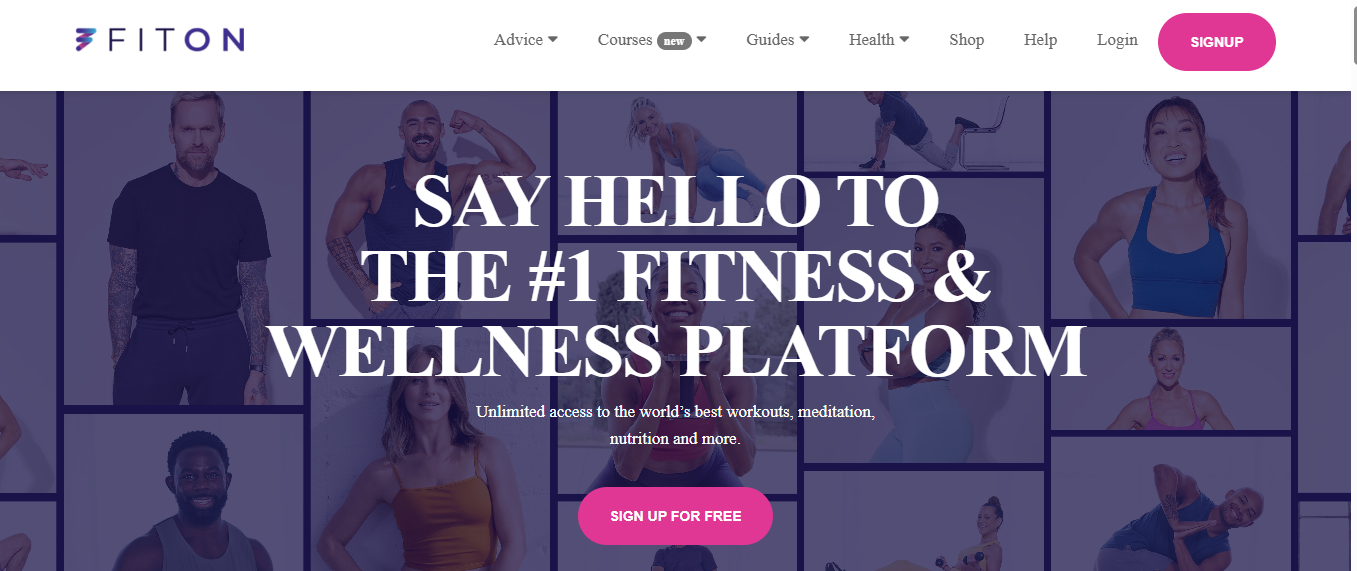
FitOn is ideal for beginners, offering simple, high-energy workouts that primarily rely on bodyweight exercises. This app provides a variety of classes, including yoga, HIIT, and Pilates, all designed to be easy to follow with clear instructor guidance. It’s a great choice if you want an approachable way to start fitness without needing equipment or prior experience.
Features
- Trainer-led workouts for all fitness levels
- Emphasis on bodyweight training and mobility
- Wide variety, including yoga, HIIT, and Pilates
- Classes from celebrity trainers
- User-friendly and welcoming interface
8. Hevy

Hevy combines workout tracking with social motivation, making it great for users who thrive on community accountability. You can log workouts, track progress, and create routines, but its standout feature is the social feed where users share workouts, comment, and encourage each other. This unique blend fosters a motivational environment while providing effective workout tracking.
Features
- Social feed for sharing and motivation
- Workout logging and custom routine building
- Detailed performance tracking
- Community engagement features
- Easy-to-use interface
9. Adidas Running by Runtastic

Adidas Running is a standout free app packed with workouts and training plans focused on running and overall fitness goals, such as fat loss and endurance. It features built-in fitness tests to personalize your workout experience, making it a versatile tool for both beginners and more experienced athletes. Almost all content is available for free, making it a high-value choice.
Features
- Comprehensive free training plans
- Personalized workout recommendations
- Fitness tests to gauge progress
- Wide range of beginner to advanced workouts
- Clean interface, easy to use
10. Strong

Strong is a dedicated workout tracker designed for experienced lifters who want complete control over logging and tracking their progress. It doesn’t offer preset workouts, but it allows the creation of custom routines and provides detailed analysis of lifts and personal bests. The free version supports multiple workouts and templates, making it suitable for advanced training and data-focused athletes.
Features
- Custom workout creation and logging
- Advanced progress analytics and charts
- Streamlined, distraction-free interface
- Ideal for serious strength trainers
- Supports multiple workout templates
11. SmartWOD

SmartWOD caters specifically to CrossFit enthusiasts by delivering daily workouts (WODs) that are classic and widely recognized in the community. The app features timers for popular CrossFit formats, including AMRAP and EMOM, and tracks your past workouts and personal records. It’s simple, highly functional, and ideal for those who want instant access to proven CrossFit routines.
Features
- Extensive library of benchmark and hero WODs
- Built-in timers for AMRAP, EMOM, Tabata formats
- Tracks workout history and personal records
- Minimalist interface focused on function
- Designed for CrossFit athletes and enthusiasts
12. Johnson & Johnson 7-Minute Workout (retiring soon)
This app, known for quick full-body workouts ideal for busy people, will be retired by the end of the year. It has a straightforward approach focusing on short sessions that require no equipment, making it convenient for on-the-go training until support ends.
Features
- Short 7-minute workouts
- No equipment required
- Great for busy schedules
- Simple, effective full-body routines
- App retirement imminent
13. Sweat (7-day trial only)
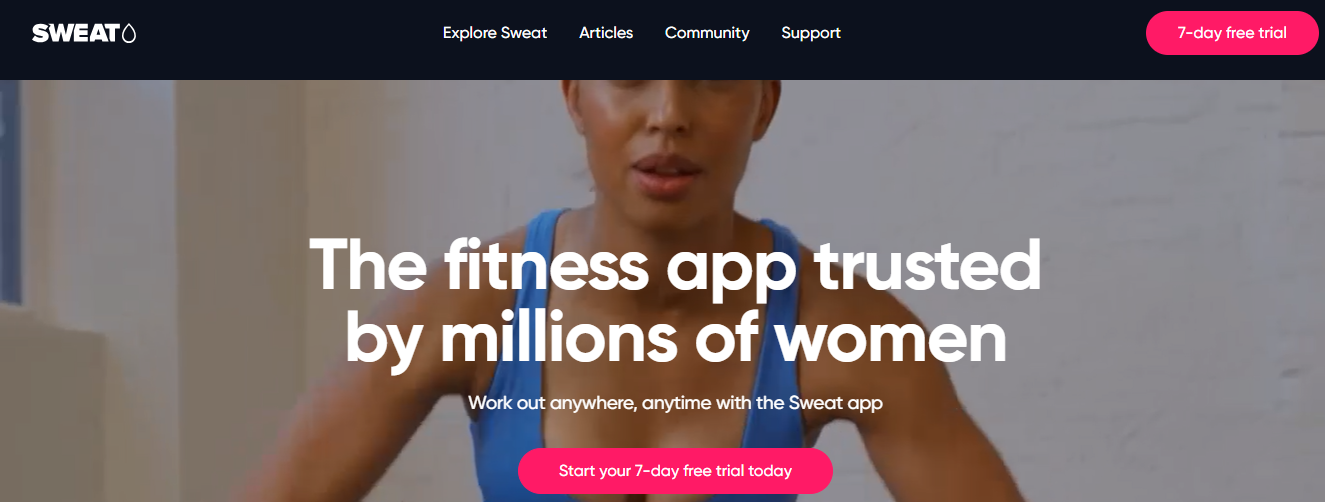
Sweat provides a detailed fitness experience emphasizing metric tracking, including daily water intake and step counts. Although it does not offer a permanent free version, it provides a 7-day free trial to explore its comprehensive workout options, which encompass strength, cardio, and more. This app is ideal for users who want to try it out before committing to a paid plan.
Features
- Tracks water and steps
- Diverse workout types covered
- 7-day free trial available
- Detailed fitness tracking metrics
- Suitable for all fitness levels
14. Freeletics
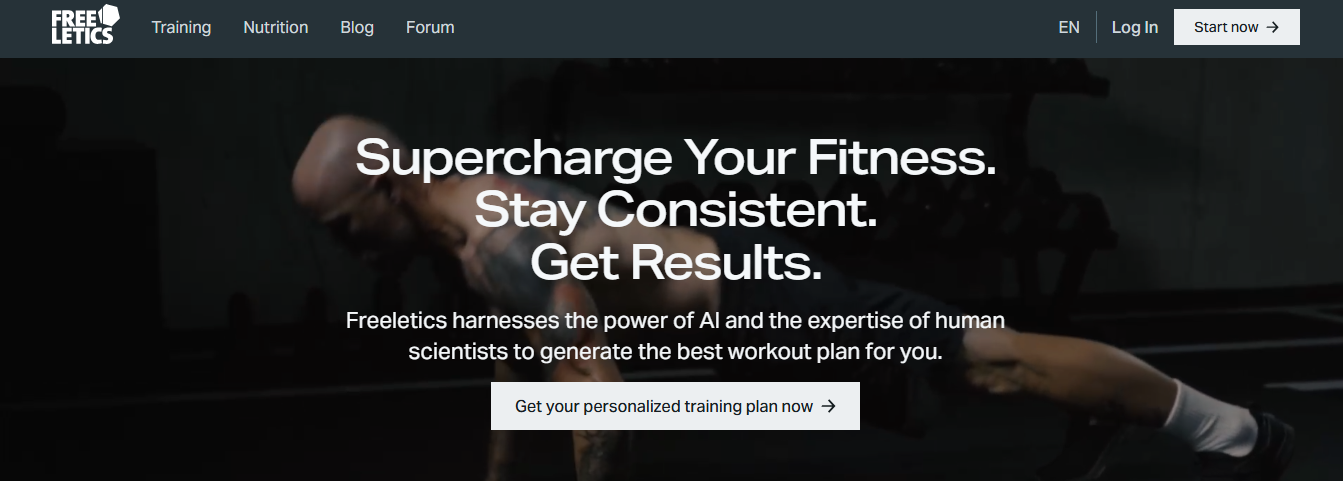
Freeletics offers free workouts featuring animations, but no detailed verbal guidance. This could be a challenge for beginners needing instruction on proper form. The app focuses on bodyweight exercises, aiming to develop strength and mobility, though users may find a lack of coaching a drawback.
Features
- Bodyweight workouts are available for free
- Animated exercise demonstrations
- No verbal technique guidance
- Focuses on strength and mobility
- Suitable for those who are comfortable learning independently
15. Zombies, Run!

Zombies, Run! turns cardio exercise into an engaging, story-driven game where you complete missions while running. The free version allows access to several missions, making workouts fun and immersive. A subscription unlocks even more missions and challenges for those wanting expanded content and motivation.
Features
- Gamified running experience
- Mission-based storytelling
- The free version includes several missions
- Audio instructions and narrative
- Subscription unlocks more challenges
16. Daily Yoga

Daily Yoga supports yoga practice along with Pilates, HIIT, and meditation routines. However, its free version is quite limited, frequently prompting users to upgrade to the paid version with pop-ups and quizzes that can interrupt the flow. The user experience in the free tier is not the smoothest.
Features
- Yoga, Pilates, HIIT, and meditation classes
- Limited free version functionality
- Frequent prompts to upgrade
- Guided sessions with instructor demos
- Suitable for yoga enthusiasts willing to upgrade
How can you use these apps without losing your gains?
If consistency is the priority, choose a single program-first app as your anchor, and use one tracker for objective metrics. For example, lock a weekly schedule with a program-led app, then sync or manually record key lifts and runs in a dedicated tracker so you preserve a single progress timeline. Habit wins over feature breadth; tiny daily wins compound faster than chasing the newest functionality. Treat app choice like choosing a coach: the right coach corrects form, repeats the basics, and keeps you coming back.
What should you feel, not just know, when you pick an app?
Choosing a free app should feel like selecting a partner for a specific season, not signing a lifetime contract. If the app encourages you, corrects form, and helps you string together 8 to 12 weeks of consistent practice, it has already paid back your time. Think of it like buying a reliable pair of running shoes: flashy upgrades are fun, but comfort and fit are what let you actually run.
That simple decision about fit and feedback seems solved, until you realize how many small design choices quietly kill consistency.
Related Reading
- Best Fitness Apps
- How Many Pull Ups Should I Be Able To Do
- Average Bench Press By Age
- Average Grip Strength Male
- Average Bench Press
- How Much Does A Bench Press Bar Weigh
- Average Male Bench Press
- How Much Can The Average Man Bench Press
Features to Consider When Choosing a Free Workout App

Choose features that actually keep you training, not features that just look good in a store listing. Focus on interoperability, intelligent progression, interruption-free sessions, and clear ownership of your data; these are the key factors that turn downloads into measurable results.
What data and integrations should I demand?
Good tracking does more than count reps; it anchors progress so your next workout gets harder for the right reason. Reliable sync with watches and smart scales, easy export of workout logs, and consistent heart rate or power data let you compare weeks and spot real change. Tracking fidelity matters at scale, and Western News reports that 75% of users find tracking features essential in a workout app, 2025, which underscores that most people expect objective feedback, not guesses.
How sophisticated should personalization go?
Customization should act like a coach who knows your limits, not a template that repeats the same session until you quit. Look for automatic progression rules, exercise substitution based on available equipment, and fatigue-aware scaling that reduces load after missed sessions. Those capabilities respond to a clear preference, since Western News found that over 60% of users prefer apps with customizable workout plans in 2025, showing that cookie-cutter plans lose momentum quickly when life gets in the way.
Why do tiny interruptions ruin a streak?
This is a pattern across products: upgrade prompts, slow video buffers, or a dozen taps to start a workout all add friction and chip away at habit. Users describe the feeling as frustration that turns into avoidance, and that emotional drop is why a technically capable app still fails. Think of an app’s flow like a lane on a track; small obstacles force you to slow down, and repeated slowdowns cost consistency.
Most people run with “free” apps that gate the good stuff because it feels familiar. The hidden cost is a fragmented routine, lost progress, and the cognitive tax of juggling paywalls and compatibility. Platforms such as AI fitness app centralize athlete-tested programming, keep core coaching accessible, and maintain continuity across devices so users spend less time fixing friction and more time getting stronger.
Which UX details actually pay off?
Micro-features matter: one-tap start, persistent interval timers that survive screen sleep, voice cues timed to rep tempo, and accessible captions so workouts work in noisy environments. Those small design choices are why one app feels effortless and another feels like work, and effortless is what turns a week of workouts into a year of gains.
How do you verify that a free app is truly usable in the long term?
Scan for these key features before committing: no mid-session paywall pop-ups, a visible version update cadence, a clear export or backup option, and straightforward support channels. It’s exhausting to rebuild history when an app locks you out, and users often report abandoning otherwise good programs because the moment-to-moment experience betrayed their trust.
Ready to train like the legends and finally achieve the body you've always wanted? GetFit AI's AI fitness trainer app lets you follow the exact workout routines that helped Arnold Schwarzenegger, Kobe Bryant, Cristiano Ronaldo, Serena Williams, and over 11 other elite athletes become champions. You can chat with them whenever you need guidance or motivation. Download the #1 rated AI fitness app for free today to get fit for less than the cost of a single month's gym membership.
That progress may seem simple until you realize the real payoff lies in one detail you probably overlooked.
Related Reading
- Bench Press Standards
- Do Pull Ups Work the Chest
- Symmetric Strength
- Average Deadlift Weight
- Grip Strength Norms
- 1 Rep Max Chart
- Average Male Deadlift
- Good Bench Press Weight
Benefits of Using Free Workout Apps
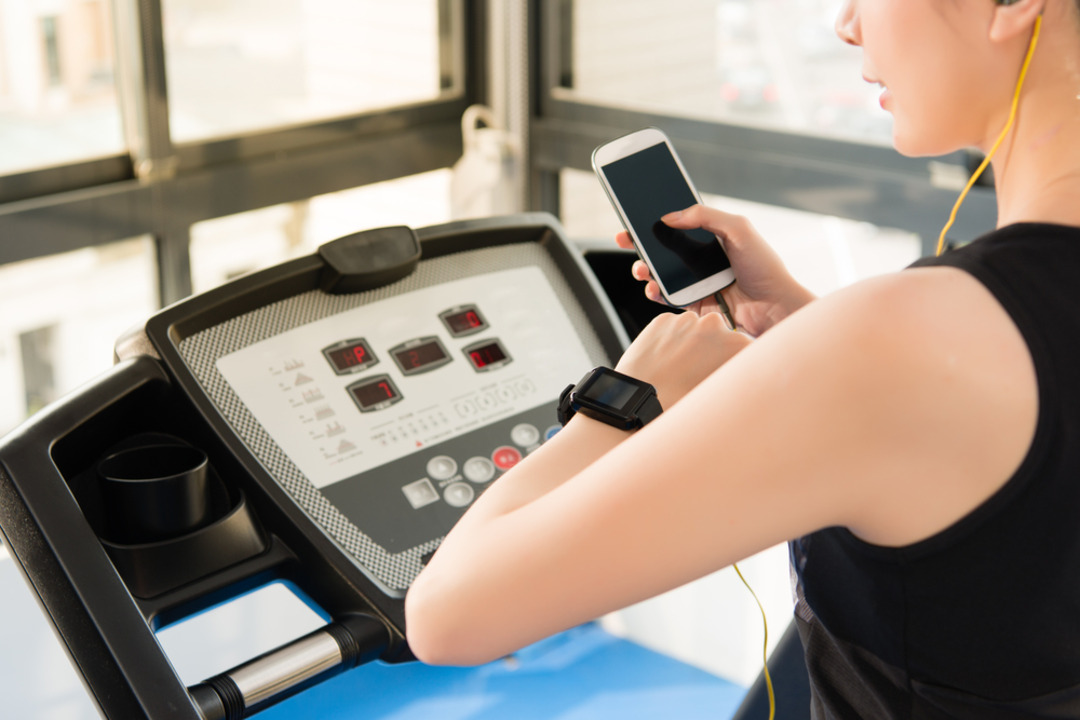
Free workout apps can do more than replace a gym pass; when they combine clear progression rules with behavior design, they deliver measurable fitness gains and habit change within weeks. They earn their keep not by being flashy, but by turning repeatable, coachable practice into simple daily actions you actually complete.
How do free apps produce real gains?
Pattern recognition: Users improve when programs incorporate progressive overload and provide simple feedback. A nationwide 2024 study, [Maintaining healthy lifestyle through fitness app use: A parallel mediation model, 2024, 75% of users reported improved physical fitness after using free workout apps for 3 months, supports that well-structured free programs can yield measurable results quickly. Think of a program like a recipe, where the app serves as the chef who scales sets, reps, and tempo, so the same dish yields better muscle, power, or endurance week after week.
Why reminders, habit cues, and one-tap starts matter
This is a constraint-based observation: if starting a workout takes more taps than your willpower allows, you will skip it. The same study found that [Maintaining healthy lifestyle through fitness app use: A parallel mediation model, 2024, 60% of participants experienced increased motivation to exercise regularly due to app reminders, which shows that timely nudges matter more than clever features. In practice, short reminders paired with single-action session starts convert intention into action, especially for people juggling kids, shifts, or travel.
What keeps people from sticking to an app, even when it's free?
Problem-first: inconsistency usually traces back to poor scaling and attention leakage. This pattern is evident among home workout users who prefer bodyweight options and clear routines. When plans fail to adapt to missed sessions or limited equipment, users either grind through overly ambitious workouts or abandon them because nothing fits their day. That mismatch is why low-friction personalization matters as much as content variety.
Where athlete-tested programming changes the equation
Specific experience: when athletes’ routines are translated into programmable progression rules, they become reproducible. A great app takes the logic behind an elite routine, preserves the intent for strength, power, or skill, and then maps it to your current load, the number of available sessions, and your recovery. The result is not celebrity mystique, but predictable improvement, because intensity and volume are adjusted to keep you just on the edge of adaptation without burning out.
Status quo disruption: the familiar route and its hidden cost
Most people stick with generic templates because they are easy and free, which is understandable. That approach works until you try to become measurably stronger or faster, and then progress stalls because the plan fails to adapt to missed workouts, fatigue, or changes in equipment. Platforms like GetFit AI provide athlete-tested programming, translated into adaptive guidance and contextual substitutions, which preserve progression while reducing the time you spend guessing what to do next.
How to judge whether a free app will actually move the needle
What to look for: explicit progression rules, simple substitution logic for equipment, fatigue-aware scaling that reduces load after missed sessions, and exportable logs that let you see weekly trends. A sound signal is whether the app converts workouts into a single, readable trend line of effort and outcomes, rather than scattering data across badges and social posts. Practically, that means you can answer this question: Is my average training volume rising in a way that explains my strength gains?
What people really feel when an app fits
Pattern-based empathy: users experience relief when a program aligns with their life, not when their life aligns with the app. It is exhausting to toggle between ten-minute workouts, confusing trackers, and a plan that assumes unlimited equipment. When the app removes friction and preserves progress, motivation shifts from guilt to momentum, and small wins compound into visible change.
That simple advantage seems ordinary until you realize there is one decision that makes all the difference.
How to Choose a Free Workout App
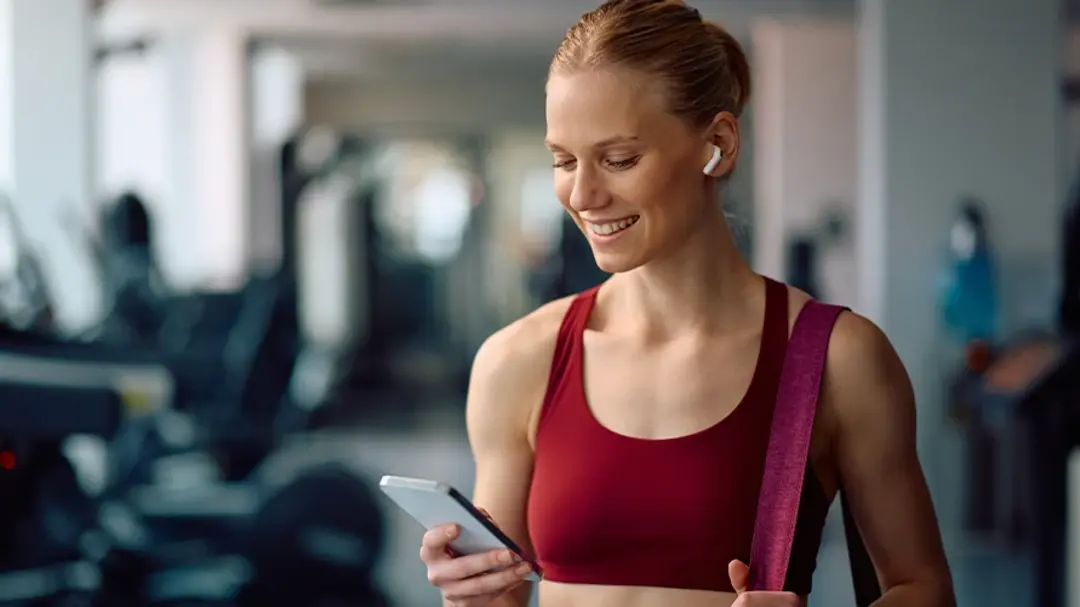
Select an app that demonstrates its ability to transform a download into steady improvement, not just a few inspiring videos. Look for transparent coaching sources, durable data ownership, and reliable auto-regulation so the tool feels like a training partner you can trust for months, not a novelty you ditch after a week.
Who built the program, and can they support it?
Check the provenance. If a plan claims to replicate an elite athlete or coach, look for clear evidence that the routine was translated, not dramatised: workout dates, original session samples, and a reproducible logic for intensity and volume. Prefer apps that publish the author's name, credentials, and short case examples showing measurable results over a 6- to 12-week period. That tells you whether the content is authored by a coach who programs progression, or by a marketer who bundled branded clips.
How does the app handle your real-life constraints?
Test the app’s substitution and recovery handling under realistic limits, such as fewer sessions, less equipment, travel, or an unexpected week of reduced work due to illness. Good apps will scale load and session density when you miss days, and show a clear rule for substitutions rather than a one-size swap. If the app only offers generic “use dumbbells instead” without adjusting total volume or intensity, you will lose the stimulus you need to improve.
Will my health data stay useful and mine?
Prioritize apps that allow you to export full workout logs, sleep, weight, and heart rate data in a single timeline, as long-term progress requires a single source of truth. Since POW8R reports that 90% of users find apps with integrated health tracking more beneficial, in 2025, choose products that permanently link workouts to biometric data, allowing you to spot real gains, not guesswork. Also, confirm your privacy settings and backup options, so your history does not disappear if the app changes its policy or shuts down.
Most people patch together three apps because each one looks good on its own, and that works at first, but it fragments your progress and wastes time. As people juggle their schedules, the real cost becomes apparent as scattered data, contradictory adjustments, and stalled momentum. Platforms like GetFit AI centralize athlete-tested routines, adapt sessions when you miss work or swap equipment, and keep a single training timeline, reducing the friction of switching tools and preserving the story of your improvement.
How to test a free app in two weeks: the practical checklist
Run a brief experiment before committing. For 14 days, track: session completion rate, average perceived effort per session, and whether the app adjusts when you skip a day. Note the reliability of connectivity and whether you can export your logs. Motivation matters too, and according to Medium, 70% of users report increased motivation when using workout apps 2025, so watch whether initial drive converts into repeatable behavior. If the app keeps you training, preserves data, and adapts to missed sessions, you’ve found a keeper.
Think of your choice like buying a tool for a lifetime of projects, not a one-off gadget: pick for durability, provenance, and the ability to prove progress.
The following section will pull back the curtain on what it really feels like to train with an athlete at your shoulder, and why that changes everything.
Make Your Favorite Athlete Your Fitness Trainer | Try GetFit AI's AI Trainer App for Free Today
We both want coaching that fits life and produces real results, not another app you try once and forget; consider GetFit AI, which has logged over 10,000 workouts completed using GetFit AI, and where 90% of users reported improved fitness levels within 3 months. Try it for a few weeks and see if athlete-tested routines and chat-style guidance finally turn your intent into steady progress.
Related Reading
- Average Bench Press By Age 16
- Best Calisthenics Workout App
- Average Deadlift Weight For Male
- Average Deadlift Weight Kg
- Best Workout Apps
- Best Hiit Workout App
- Best Workout Tracker App
- Average Bench Press Kg By Age
- Best Gym Workout App



.png)











